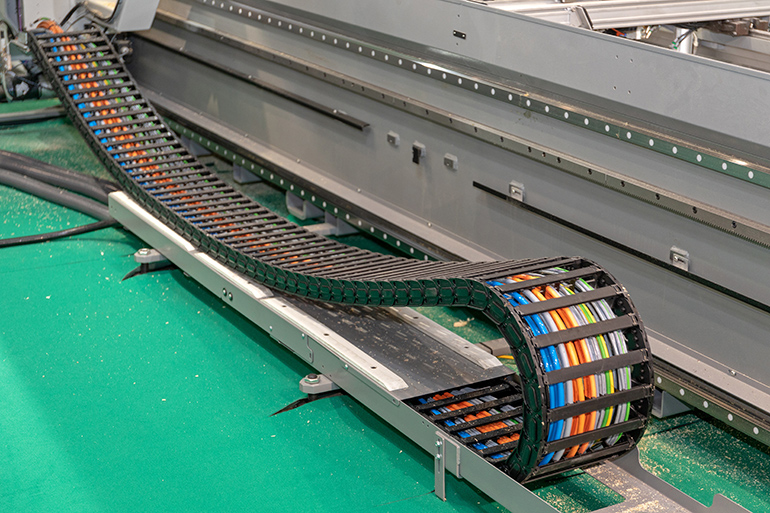
Contributed by Jody Muelaner
Cable carriers guide and protect electrical cables, as well as hydraulic or pneumatic hoses. They limit the minimum bend radius and therefore bending stresses, while often also constraining bending to a single plane. They shield and protect cables from wear, prevent entrapment in moving machinery and avoid entanglement. To do this effectively, it is essential that the cable carrier is properly secured to machinery. The method of securing will depend on the type of cable carrier being used. As a minimum, all cable carriers should be securely fastened at each end, using an end connector, mounting surface or junction box. Depending on the type, some additional guiding or securing may also be necessary.
The drag chain style of cable carriers are the most common type. They limit bending to a single plane and are typically used for linear motion applications. This type of carrier usually has a special link at each end with a flat mounting surface containing holes for fasteners. This may be bolted directly to a flat surface, or often to an angled bracket allowing it to be secured to a surface which is perpendicular to the cable run. These cable carriers may be supplied in standard lengths, with end connectors fitted at each end, or be modular in construction. Modular cable carriers are made up of individual chain links which typically snap together using a push-fit connection. When constructing these modular cable carriers, end connectors must be specified and installed.
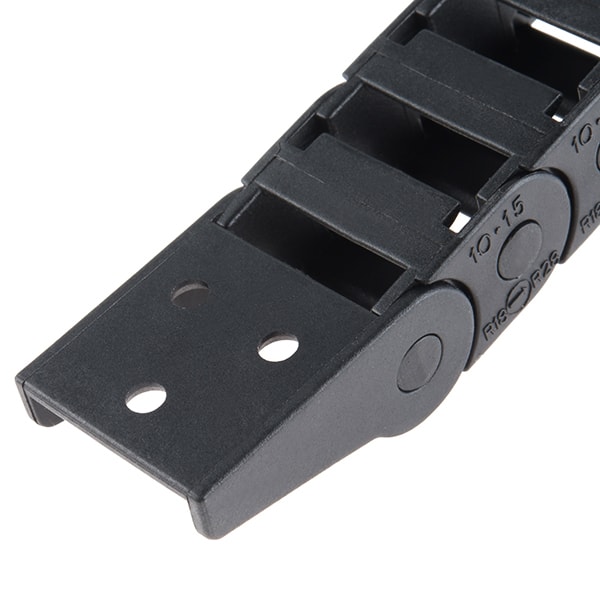 Longer drag chains, typically over 5 m in length, will operate more reliably if they run in a guide trough. This channel section provides a low friction surface on which the cable guide can run without snagging. Guide troughs must also be securely fastened to the machine or floor. They typically have feet installed at regular intervals for this purpose.
Longer drag chains, typically over 5 m in length, will operate more reliably if they run in a guide trough. This channel section provides a low friction surface on which the cable guide can run without snagging. Guide troughs must also be securely fastened to the machine or floor. They typically have feet installed at regular intervals for this purpose.
Multi-flex cable carriers permit bending in any direction and are often used on multi-axis robots. This type of cable carrier still needs to be secured at each end but also often requires securing at a number of points in-between. Multi-flex cable carriers are normally terminated at each end at a junction box. The links are secured at the junction boxes and intermediate points along the length using clamps. These clamp around the circumference of the cable carrier and provide feet to secure the clamp to a surface with bolts.

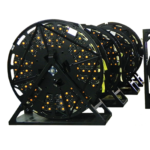
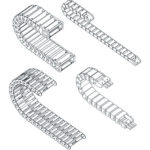
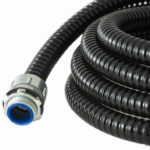

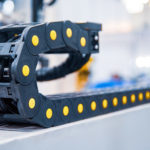

Leave a Reply
You must be logged in to post a comment.